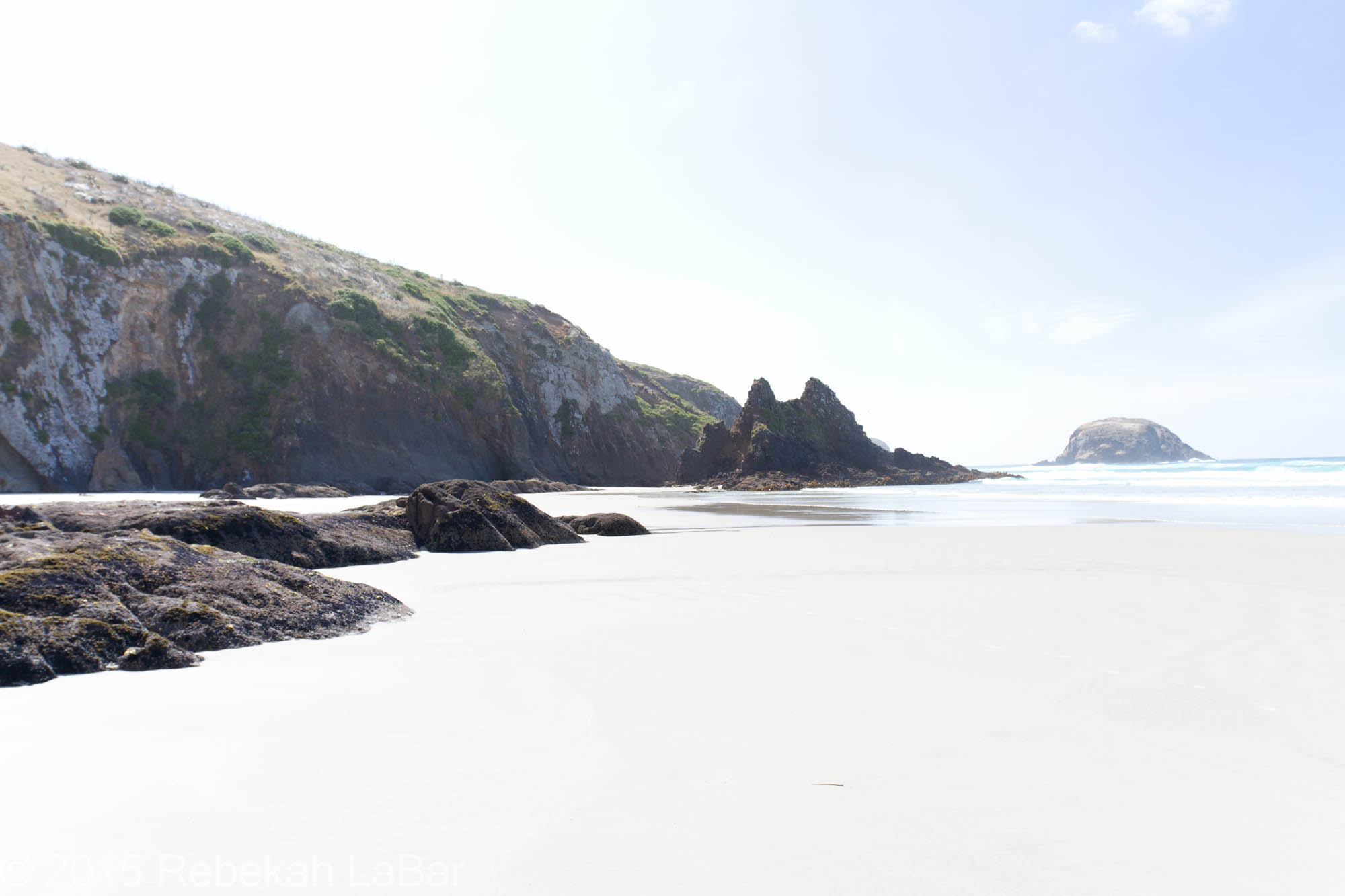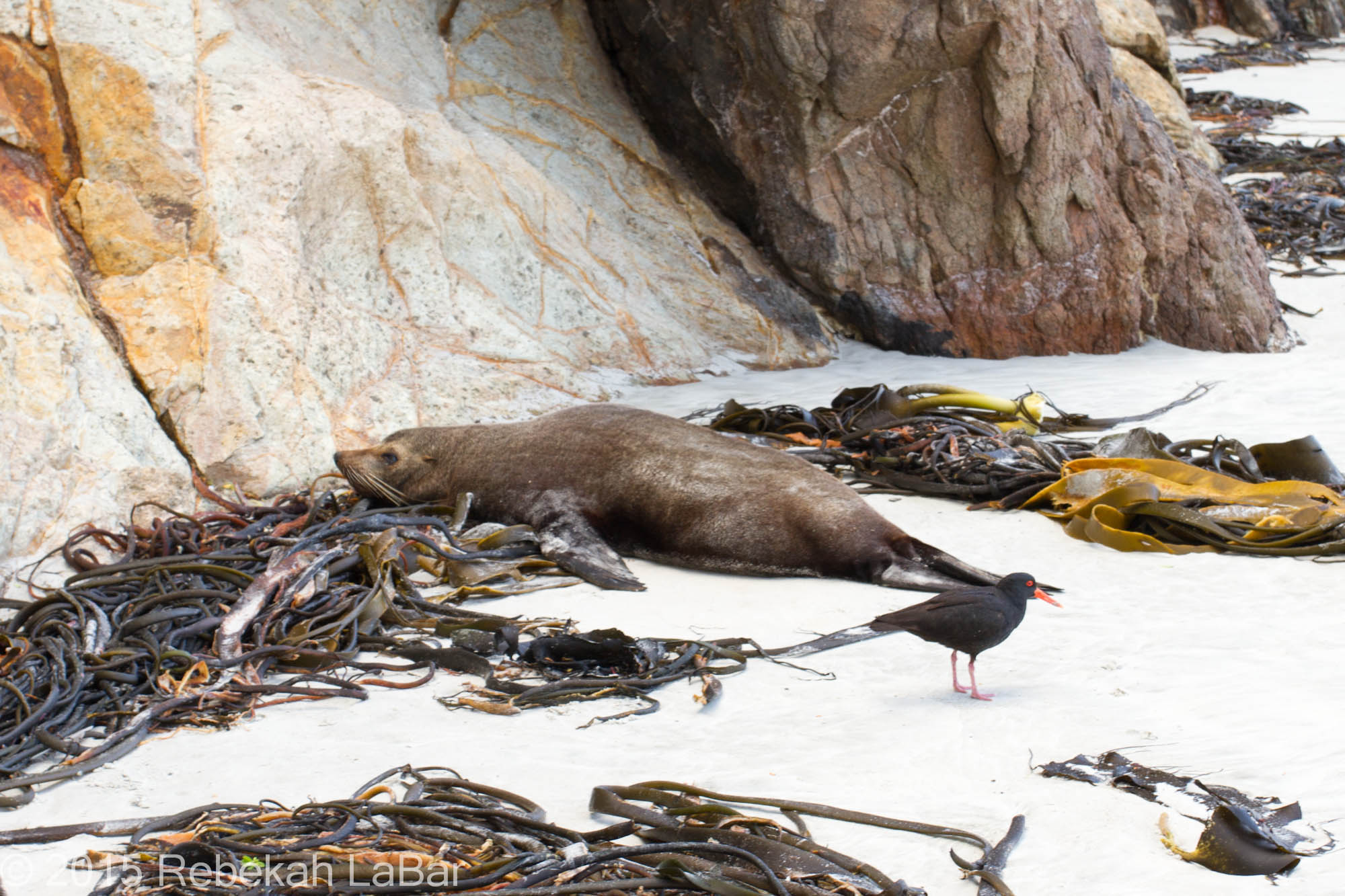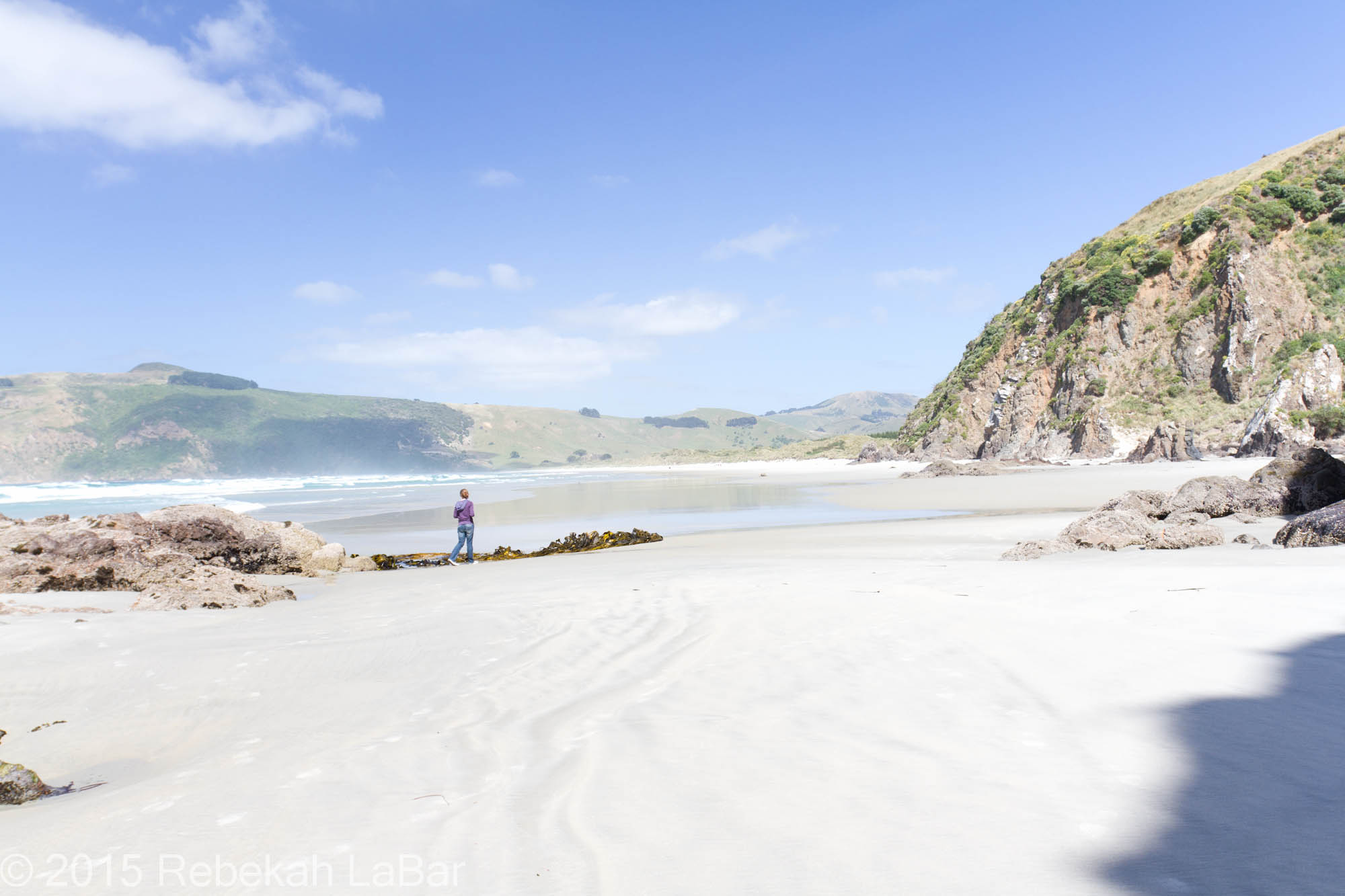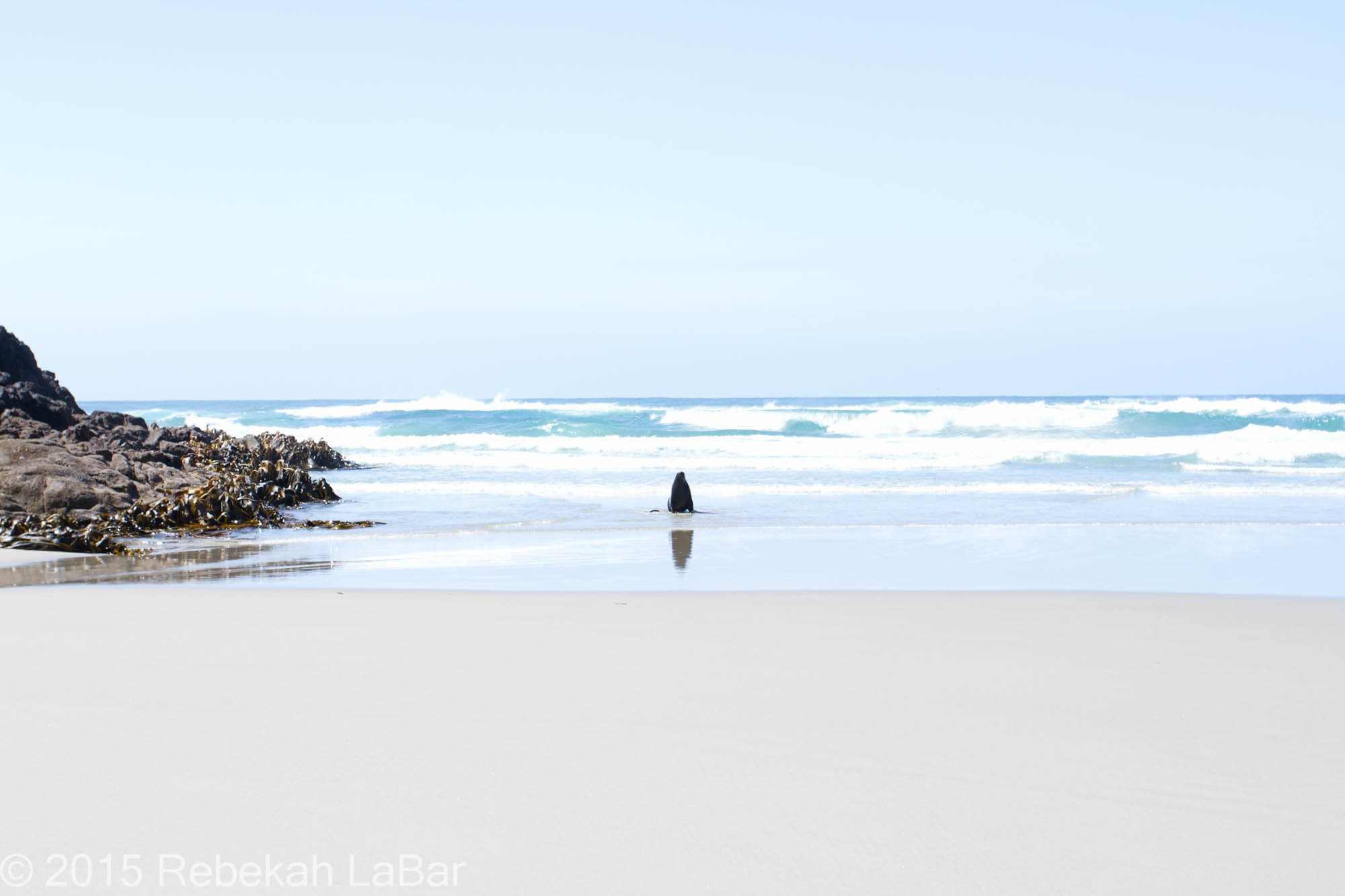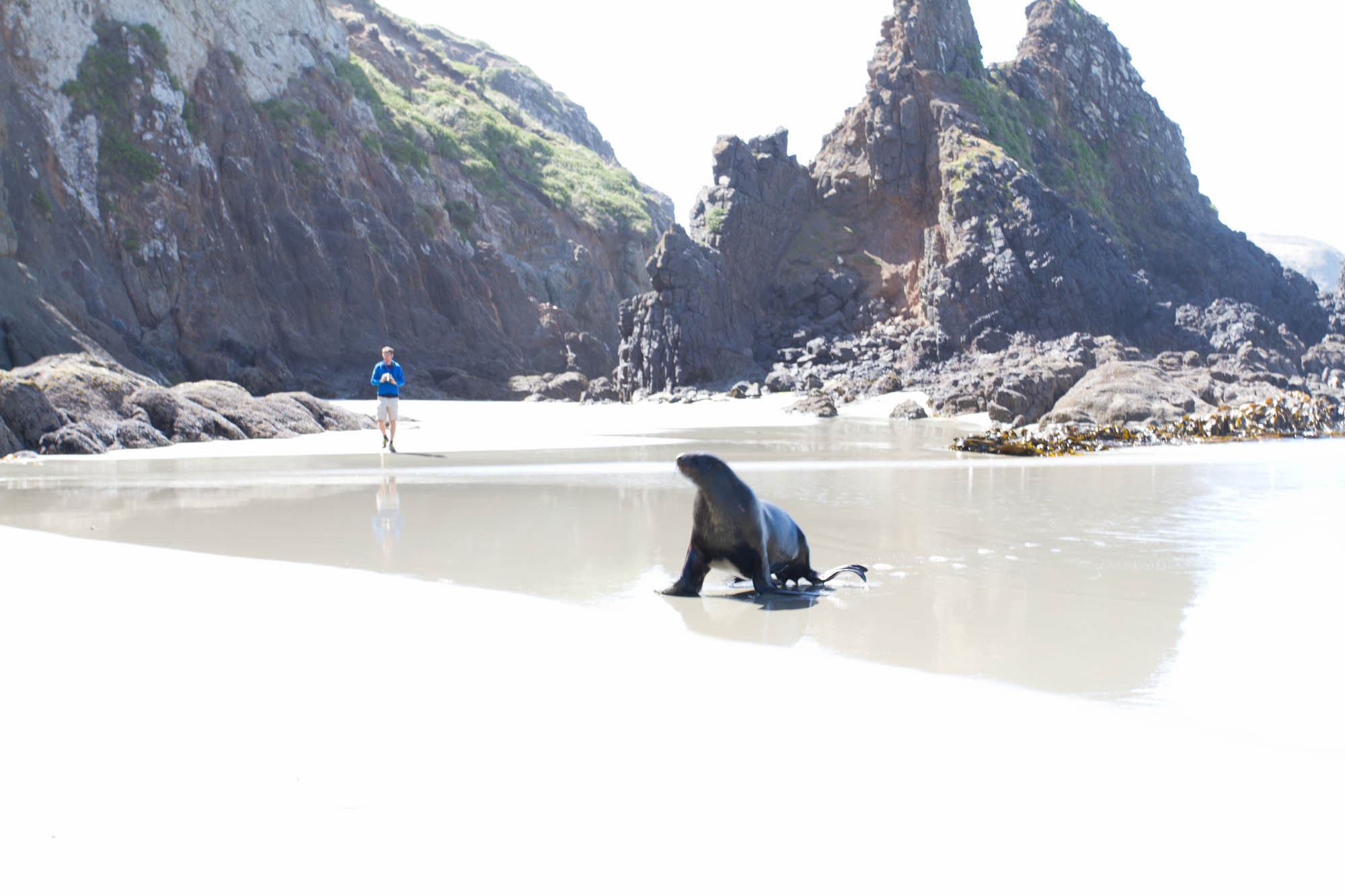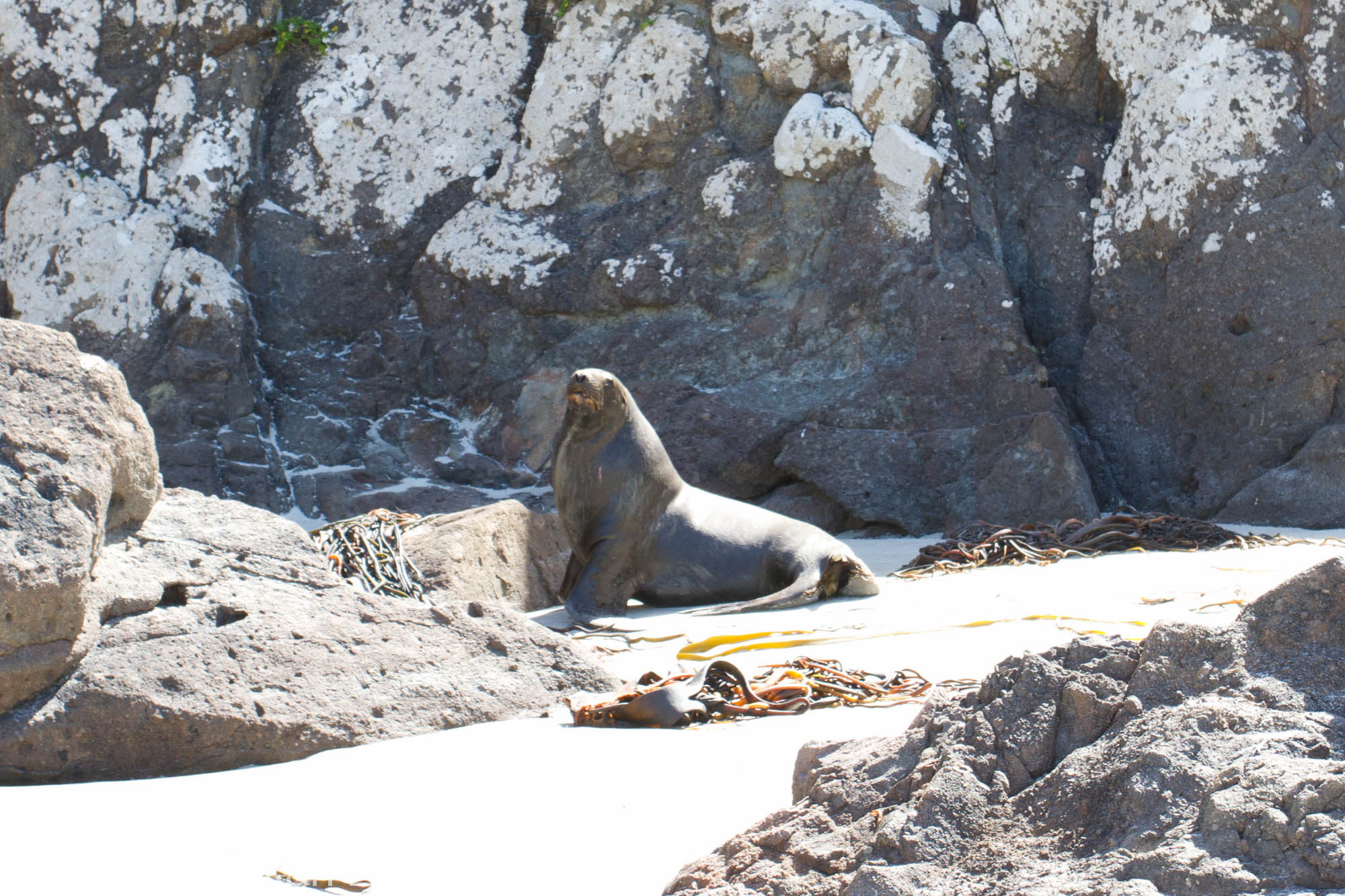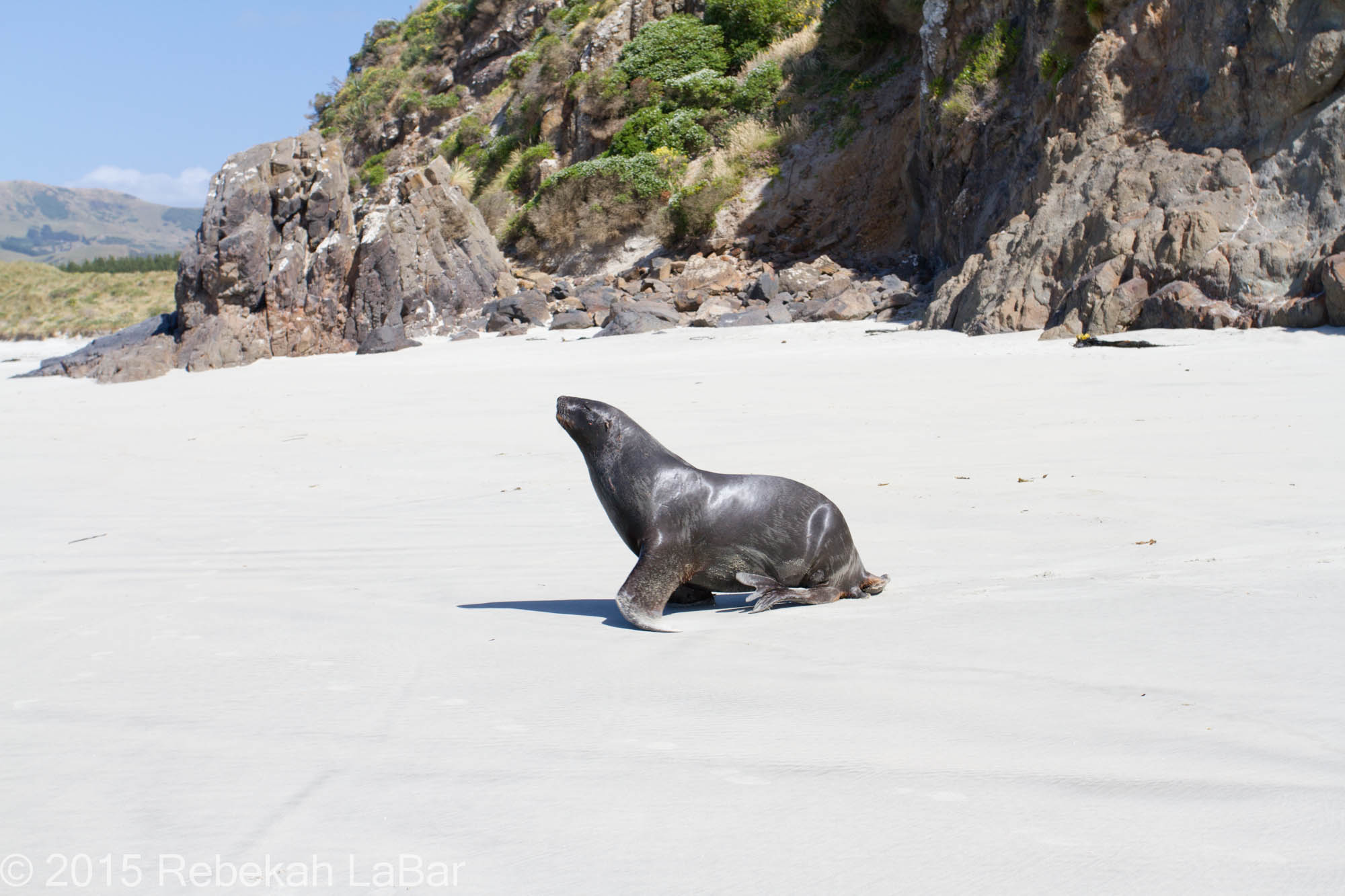The next morning after viewing the Little Blue Penguins, my friends and I went to a beach on the south side of Otago Peninsula. We were hoping to see some sea lions, as it is one of the few places around the southern coast of the South Island that the New Zealand sea lions can be found.
I had already seen many New Zealand fur seals on both the North and South Islands, but I had never before seen a sea lion in NZ.
The beach was nearly empty, which was quite nice, as it is not a well-publicised spot. We walked down the beach a little ways, towards some rocks that I thought would make good hiding places for seals and sea lions, when I suddenly spotted something laying in a pile of kelp.
I signalled for my friends to come over and have a look, and at first I thought it looked just like the fur seals I had seen, but wasn’t quite sure from a distance if it might be a sea lion.
I’m a little ashamed to admit I hadn’t seen enough photos of the differences between them, but since then I have had a better look at my photos and compared them with the Department of Conservation images and confirmed this first one was a fur seal. The fur seals have the longer, pointy snouts and long, pale whiskers, while the sea lions have shorter, blunter noses with short, darker whiskers.
After leaving the poor seal alone to sleep again, we started to wander back up the beach when a couple of my friends started shouting and pointing towards the water.
This time it WAS a sea lion, a pretty big one, and it was my first in New Zealand! We watched it rise up out of the water and start awkwardly splashing out and trotting on to the shore. My friend who was closest said at first he thought it looked like a person coming up out of the water at that distance….
The sea lion laid down a few times as if it were tired and wanted a nap, but then would get back up and lumber over to the next stopping place. Each time we tried to follow it from a safe distance, at least until it finally turned and headed towards the sea where I was standing. They say never to get between a seal or sea lion and the sea, which is what I realised I had done unwittingly, so I quickly backed way up and the sea lion waddled right on past to go back to the sea (perhaps to look for a quieter spot…sorry buddy!).
It was pretty awesome to see the sea lion rise out of the water and manoeuvre around a bit on land. And now I know what sea lion tracks look like in the sand. 🙂

